- Learning time
- 20 minutes
- First play time
- 60 minutes
Piepmatz
Designed by: Ben Pinchback,Matt Riddle
Piepmatz is a game of bird collection: you are trying to collect both seeds, and the most of different types of birds, with considerable bonuses for pairing up females and males. During play, you’ll be collecting bird cards from the table and adding them to sets in front of you.
At the start of the game a Feeder card is laid out on the table and four Seed cards are placed in a column above it. Bird cards are placed at the feeder: how many depends on how many players you have, but essentially the idea is that these birds are currently feeding, and any birds played from your hand go into the ‘queues’ behind them: all bird cards have a number value, and the numbers will dictate when a bird and seeds can be claimed. Players are dealt four bird cards each and the game begins.
On your turn, you play a bird from your hand into a queue of your choosing and then add up the combined numbers in the queue: if the birds in the queue don’t collectively have a higher number value than the bird currently at the feeder, you may play a bird card (of a matching or lower number than the bird just placed in the queue) from your hand to the table, as part of your bird sets. If the queue does have a higher number than the current feeding bird, however, the following steps occur:
You first claim the bird at the feeder for your sets, and also a seed card. Which seed card you take depends on the numerical difference between the queue and the feeding bird: if it’s one, the seed card closest to the feeder is taken, if it’s two then the next card up is claimed, and so on. Then the bird at the front of the queue hops up to become the new feeding bird. But – if it’s the case that the queue still collectively out-numbers the (new) feeder, the above process happens again. With a series of low cards this can happen two or three times, leading to a bumper grab of birds and seeds!
The catch with taking the seed cards is that sometimes they come with ‘bad’ cards such as the Squirrel or the Crow, who steal away seeds or birds from your collection.
At the end of each turn, players replenish their hand back up to four; from either the display or the top cards from the deck. The game ends when the seed cards run out, and everyone can add two cards from their final hand to their sets before scoring. Everyone scores their seeds and 5 points for every pair of birds they have, but only score sets of birds, however, if they have the most of that set.
Joe says
The cards are so pretty, and the general air of bucolic idyll made me want to love it. But it just felt a little fiddly in the end. There are simpler set collection games out there that offer a similar strategic experience with less tangles.
The guru's verdict
-
Take That!
Take That!
It's not quite as gentle as it first appears: eagle-eyed players can watch what opponents are collecting and make efforts to hamper their plans.
-
Fidget Factor!
Fidget Factor!
Reasonably low, although the rules can seem a little opaque at first - the game is simple, but getting your head around the mechanics of what happens when and why is a couple of steps up from the likes of Uno.
-
Brain Burn!
Brain Burn!
You want seeds, but you don't want Squirrels or Crows. You want birds, but not the ones someone else is going to gather more of than you. You definitely want the big-scoring pairings of female-male, and the way the feeder works is key to any and all of these things. The catch with all of these things is that getting a card from your hand to your sets involves putting it at the feeder, where someone else may grab it.
-
Again Again!
Again Again!
For such a little game - a deck of cards - Piepmatz packs a big punch, and fans will find that numerous plays don't wear it out.

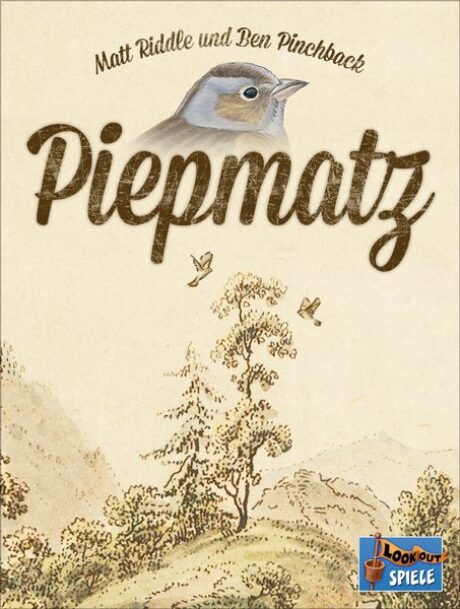


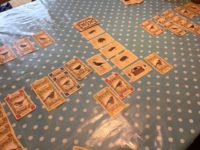
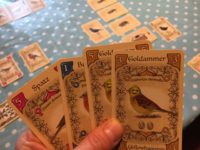



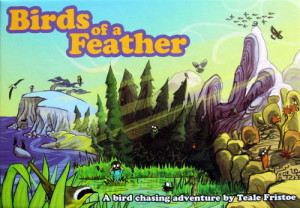

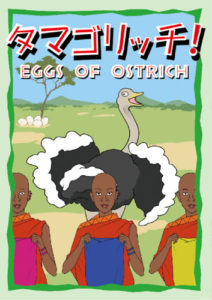


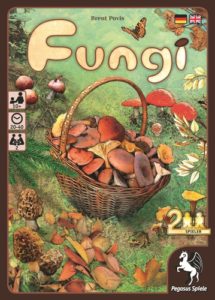
Sam says
The attempted explanation of the rules will not, I hope, put anyone off. The mechanisms of it all can at first seem a little, well, mechanical. But once you get what's happening here the apparent randomness of it all coalesces into a sense of ongoing tactical opportunities. There is certainly still luck, but it's not a luck-fest. The avian theme might not excite children but the cards are rather delightful, and there's a canniness to the play which I've yet to master. My minor gripe is that it can sometimes go on rather long, and feel a little fiddly for the type of game - set-collection - that usually benefits from speed and simplicity.